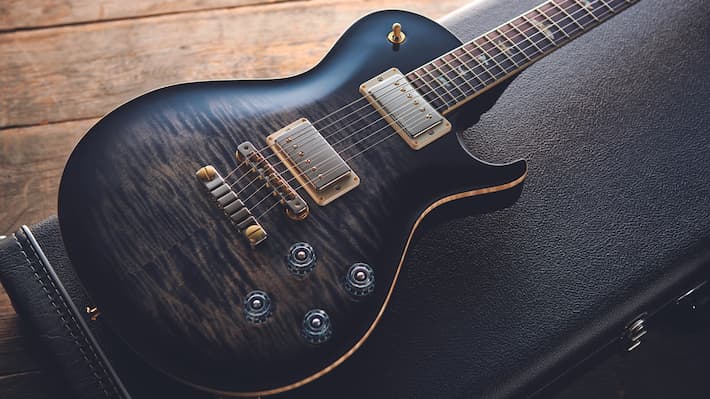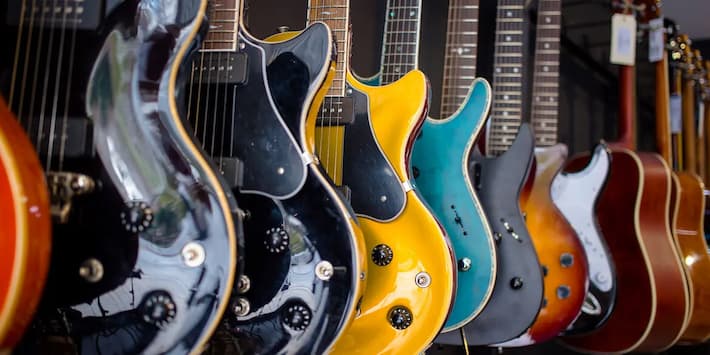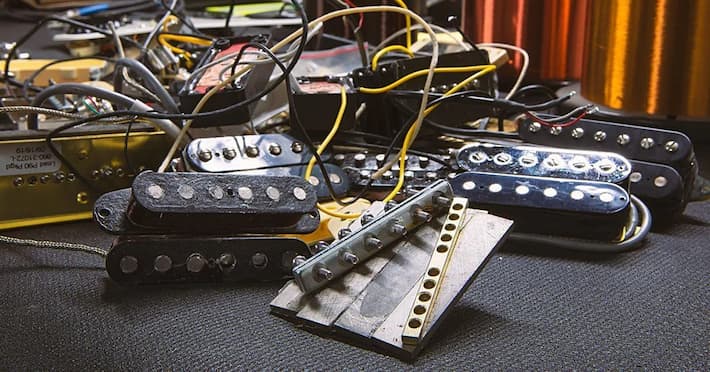Plugging in your electric guitar does not necessarily mean waking up the entire neighbourhood during a practice session. The main reason why more and more musicians choose the electric guitar is that, unlike the acoustic one, this allows users to have greater control over their volume and tone. Plus, it’s equipped with a variety of knobs and switches that control their volume and tone.
However, choosing the electric model that works best for you can be overwhelming due to the many options available. To simplify things for novices, we are breaking down 5 important factors to consider when shopping.
Choose Your Player

Given their versatility and powerful sound, user-friendly and responsive electric guitars are at the top of the game. Electric guitars for sale come in a range of styles and colours. Vintage shapes come with interesting cutaways and eye-catching colours that make the guitar as visually appealing as it is musical. If a little sizzle is just as essential to you as content, having an instrument you enjoy looking at might be a terrific motivator to take it up and practice more.
In addition to the popular solid-body electric guitar, there are semi-hollow body guitars like Donner ones with f-holes on the front that provide a twangier sound that is ideal for country and bluegrass music.
On the other hand, for guitarists who want the best of both worlds, hybrids combine the depth of resonance of an acoustic with the low-end responsiveness and capacity to experiment with the tones of an electric guitar.
Different Body Type, Different Sound

Picking the right body type is crucial as it will affect the sound. Essentially, there are three body types. Solid, hollow and semi-hollow.
Solid Body Type
The solid-body electric guitar is the most common body type and is made from a solid slab of wood. Solid-body guitars can range from a simple, single-pickup model to an ornately figured and decorated, multi-pickup instrument with a slew of electronic options. Although solid-body guitars don’t produce as much resonance as hollow-body models, the woods used still have an impact on the instrument’s sound.
Hollow Body
As the name implies, these electric guitars have hollow bodies—similar to acoustic guitars—and produce more resonance due to their design. These guitars often have an arch top and are more prone to feedback. Many jazz guitarists choose hollow bodies because they produce broad, rich tones with a deep bass response.
Semi-Hollow
The semi-hollow body, like the hollow one, has a higher resonance than the solid body. Semi-hollow guitars, on the other hand, include a solid centre wood block that increases stability and sustain while also reducing feedback. Many blues players enjoy the warmth of the semi-hollow and the greater attack and sustain provided by the centre block. Semi-hollow guitars are suitable for a wide range of musical styles, including blues, jazz, and punk rock.
Neck Construction
The neck, which extends from the guitar body, houses the fretboard and the headstock on which the tuners are fixed. It has a metal truss rod that prevents neck bowing and twisting and can be adjusted to assist the guitar in keeping a steady pitch.
Generally speaking, there are 3 types of neck construction: bolt-on, set neck and neck-through. Bolt-on necks, as the name suggests, are attached to the guitar body. This is typically a more cost-effective neck construction. It makes neck replacement easier, whether for repair or customisation. This neck structure provides less sustain and resonance than set neck or neck-through guitars.
Set necks are cemented into the guitar’s body and then clamped till the glue cures. Overall, this is a more stable neck joint, resulting in higher sustain and resonance for the guitar. Neck repairs are, however, more challenging.
Neck-through guitars have a (typically laminated) neck that, predictably, runs the entire length of the body, with ‘wings’ or ‘fins’ bonded to the sides. This provides more stability to the neck as well as increased sustain and resonance when playing. Neck repairs are more complex and expensive. However, the increased stability implies that these repairs are far less likely to be required.
Pick Ups and Electronics

Most electric guitars have numerous pickups. Some will have two or three single coils. Some will feature two or three humbuckers. Many offer both single-coil and humbucker pickups. This combination gives the player a variety of tonal options.
Pickup configurations are frequently abbreviated by referring to single coils as “S” and humbuckers as “H.” Each pickup’s positioning is noted from the neck down to the bridge. Thus, an SSH arrangement consists of single coils at the neck and centre locations, as well as a humbucker at the bridge.
Scale Length
Scale length is the length of the vibrating string, measured from the nut to the bridge. A greater scale length typically results in tighter string tension, brighter shimmer, and a well-defined bottom end. A lower scale length provides less tension, allowing for easier string bending. It can also make it easier to play with smaller hands. A shorter scale provides a generally warmer tone.



